Water Wisteria, scientifically known as Hygrophila difformis, is a popular aquarium plant thanks to its versatility of being able to be planted, floating or used as a carpet.
It’s native to Southeast Asia and can grow in a wide range of conditions, making it an ideal plant for beginners. Water Wisteria is easy to care for and can be grown in various ways, including Planted, Floating, Carpet (kind of) or even Horizontally.
In this article, we’ll explore everything you need to know about Water Wisteria Care from ideal water parameters & lighting to Planting and propagation.
Water Wisteria Benefits
- Easy to Grow
- Versatile (Plant (Vertical or Horizontal), Float or Carpet)
- Hardy
- Fast Growing (Great for water quality)
Related: View our latest Aquarium Plant Guides Here!
Table of Contents
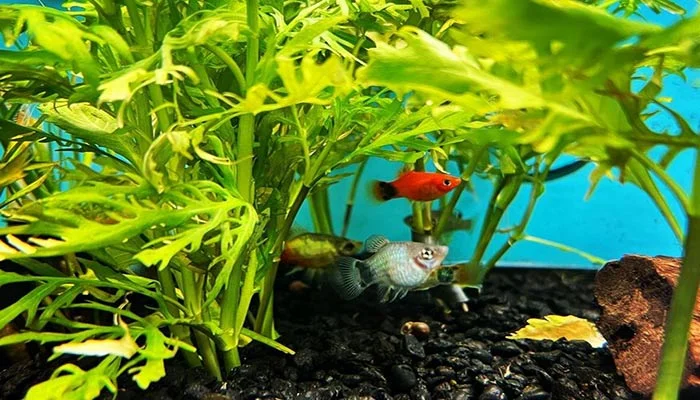
Water Wisteria: Plant, Float or Carpet?
Planting
When planting Water Wisteria, make sure to bury the roots gently in the substrate and not cover the stem with it. This ensures that the plant can absorb enough nutrients and avoid rotting.
Water Wisteria will grow both roots and shoots from its stems, allowing you to bury in the substrate or float. The plant grows roots quickly so will bounce back from any initial wilting after absorbing nutrients from the water.
- It is recommended to plant Water Wisteria in small groups of 2-3 stems to create a bushy effect.
These plants should be planted with a space of around 2 inches between each stem to allow adequate airflow and light penetration.
Floating
Water Wisteria can also be grown as a floating plant. To do this, simply allow the plant to float on the surface of the water. This method of growing Water Wisteria is great for tanks that don’t have a substrate, as it still allows the plant to absorb nutrients from the water column.
Additionally, this method is beneficial to fish and other aquatic creatures as it provides them with shade and shelter.
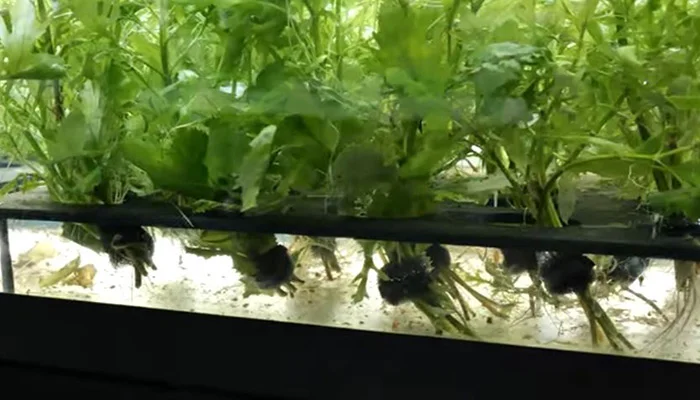
Horizontal Carpet (For the brave)
Water Wisteria can also be used as a carpet plant by planting it horizontally. To do this, place the stems of the Water Wisteria on the substrate and cover them with a thin layer of substrate.
Advice: While it’s possible to grow Water Wisteria as a carpet plant, we don’t recommend it. Why? It can be a very high maintenance task with the pruning/trimming and it often doesn’t create the dense carpet aesthetic we desired. Check out the many other aquarium plant carpet options in our guide here.
It’ll grow roots and shoots, eventually forming a dense and lush-ish carpet. It’s essential to trim the plant regularly to encourage the growth of lateral shoots and to prevent the carpet from becoming too thick and inhibiting oxygen flow.
There are a few benefits to planting water wisteria sideways or horizontally.
- First, it can help to create a more natural look in your aquarium.
- Second, it can help to prevent the plant from taking over your aquarium.
To plant water wisteria sideways or horizontally, you will need:
- A healthy water wisteria plant
- A rock, extra substrate or piece of driftwood
- A pair of scissors
- Adhesive aquarium glue (optional)
Instructions:
- Prepare the water wisteria plant by trimming off any dead or damaged leaves.
- Tie the stems of the plant to a rock or piece of driftwood, or plant the stems in the substrate at an angle.
- If you are using adhesive aquarium glue, apply a small amount to the base of the plant and attach it to the rock or substrate.
- Place the plant in your aquarium and adjust the position as needed.
With proper care, your water wisteria will thrive and provide a beautiful addition to your aquarium.
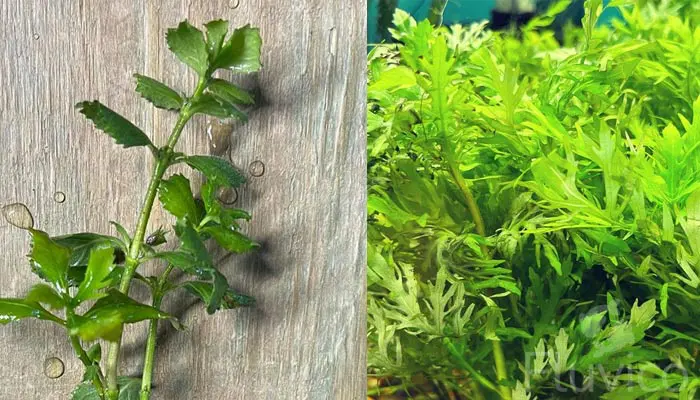
Trimming & Maintenance
Okay, so now that you’re all set up and have your Nutrients, Water & Lighting dialled in. Let’s talk trimming.
Water Wisteria grows fast, really fast, so needs regular trimming. Regular trimming also helps to maintain its bushy appearance and prevent it from becoming too tall or shading other plants too much.
Naturally, Water Wisteria can grow up to 20 inches tall which is overkill for most home aquariums but can be great for outdoor ponds.
How to trim Waster Wisteria?
Choose the Right Tools: Start with sharp scissors. Dull ones can damage the plant. I always use a pair designed for aquarium use.
Assess the Plant: Look at your Water Wisteria. Identify which parts are too long or dense. Plan your cuts. Remember, you’re aiming for a healthy shape that allows light to reach the lower leaves.
Start Trimming: Begin at the top. Trim any overly long stems. Cut just above a leaf node. This encourages new branches to grow. I’ve found cutting at a 45-degree angle works best.
Thin Out Dense Areas: If some parts of your Wisteria are too thick, carefully remove whole stems. This improves water flow and light penetration. Make sure you’re not overdoing it. You want to maintain a lush look.
Remove Unhealthy Parts: Look for any yellow or dead leaves. Cut these off. It keeps the plant healthy and stops decay in the tank.
Shape the Plant: After the initial cuts, step back and check the shape. Trim any odd-looking stems to maintain a pleasing appearance. It’s a bit like sculpting; take your time to get it right.
Dispose of Cuttings Properly: Don’t just leave them in the tank. Remove all cut pieces. They can rot and affect water quality. Outside the tank, decide. Some can be replanted or given away.
Monitor the Plant: Over the next few days, keep an eye on your Water Wisteria. It should start showing signs of new growth. Adjust your trimming technique based on how it responds.
Remember, every plant and tank is different. What works for one might need tweaking for another. Learn as you go, and don’t be afraid to experiment a bit to see what yields the best results for your setup.

Water Wisteria: Nutrients, Lighting & Water Parameters.
If you’re looking to add Water Wisteria to your Aquarium or Pond, you’ll want it to grow fast and be healthy. So let’s cover the basics of Nutrients, Lighting & Water Parameters before we get into Planting, Carpeting or Floating.
How to make Water Wisteria Grow faster?
From my experience, consistency is your best friend. Regularly check your water parameters. Adjust as needed following the advice below. Water Wisteria can grow quite quickly under the right conditions, easily doubling in size within a few weeks.
Also, don’t overlook the importance of substrate. A nutrient-rich substrate gives your Wisteria a strong root system. This supports both its growth above and below the water.
Lastly, regular pruning helps. It encourages the plant to become bushier and more lush. Plus, it stops it from taking over your tank.
Follow these tips, and you’ll have a thriving Water Wisteria display in no time.
Water Wisteria Ideal Lighting
Water Wisteria thrives under bright light. Aim for lighting that mimics natural sunlight. A good rule of thumb is to provide at least 2 watts per litre of water.
This encourages robust growth. If you’re using LED lights, go for full-spectrum ones. They cover all the bases, ensuring your Water Wisteria gets the light it needs to photosynthesise effectively.
Water Parameters (Nutrients, Flow & Temps)
Ideal Temperature
Water Wisteria prefers warm water temperatures between 72 to 82 °F (22-28 °C). At temperatures below 68 °F (20 °C), the plant may start to suffer and stop growing altogether. It’s essential to keep the aquarium’s temperature stable to avoid stressing the plant and allowing it to grow healthily.
Waterflow
Moderate water flow is key. It helps distribute nutrients evenly and prevents dead spots in the tank. But, don’t go overboard. Too strong a flow can stress the plant, hindering its growth.
The Best Fertilizers for Water Wisteria
The best fertilizers for water wisteria are those that are high in nitrogen and phosphorus. These nutrients are essential for plant growth and development. Some of the best fertilizers for water wisteria include:
- Easy Green All-in-One Fertilizer: This fertilizer is a great all-around choice for aquarium plants. It contains a balanced blend of nutrients.
- Seachem Flourish: It contains a high concentration of nitrogen and phosphorus, which are essential for plant growth.
- API Leaf Zone: This fertilizer is specifically designed for aquatic plants with broad leaves. It contains a blend of nutrients.
When choosing a fertilizer for water wisteria, it is important to consider the size of your aquarium and the number of plants you have. You will need to adjust the amount of fertilizer you use accordingly. It is also important to follow the instructions on the fertilizer label carefully. Over-fertilizing can be just as harmful as under-fertilizing.
Mineral Supplements (Soft Water/ Low Gh)
If your Water Wisteria still isn’t flourishing, check your water hardiness and Gh level. If you have soft water, you might want to add some aquarium-safe mineral supplements to your water column.
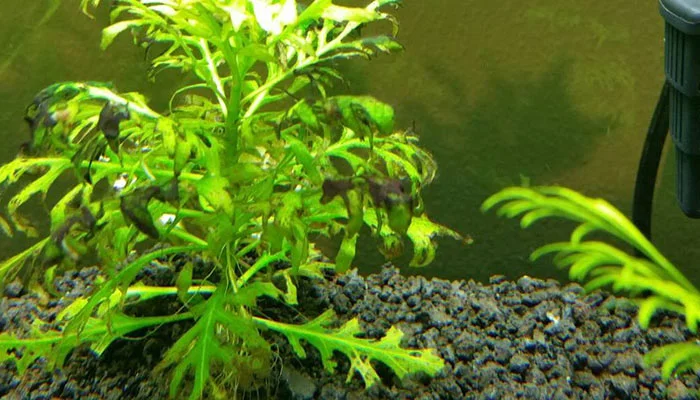
How to Fix Water Wisteria Melt / Melting Leaves
There are a few reasons why your water wisteria might be melting. Here are some of the most common causes:
- Insufficient light: Water wisteria needs at least 6 hours of light per day. If your aquarium doesn’t have enough light, your wisteria will start to melt.
- Nutrient deficiency: Water wisteria needs a variety of nutrients to thrive. If your aquarium water is lacking in nutrients, your wisteria will start to melt.
- Water quality problems: If the water quality in your aquarium is poor, your wisteria may start to melt. This could be due to high levels of ammonia, nitrite, or nitrate, or due to low levels of oxygen.
- Physical damage: If your wisteria has been damaged by fish, snails, or other aquarium inhabitants, it may start to melt.
- Melting is a normal part of the acclimation process: When you first add water wisteria to your aquarium, it may start to melt. This is because the plant is adjusting to the new environment. The melting should stop after a few weeks, and your wisteria will start to grow new leaves.
Propagation
Select a Healthy Stem: Look for a robust stem on your Water Wisteria. It should have several sets of leaves and be free of any damage or disease.
Cut the Stem: Using sharp scissors, make a clean cut below a leaf node. A good length for the cutting is about 10-15 cm. This ensures it’s long enough to plant securely but not too large to manage.
Prepare the Cutting: Remove the leaves from the bottom 2-3 cm of the stem. This part will be buried in the substrate and you don’t want leaves decaying under the substrate.
Plant the Cutting: Push the stem cutting into your substrate. Ensure it’s deep enough to stand upright without support. A depth of about 2-3 cm into the substrate should suffice.
Monitor Growth: In a few weeks, roots will develop from the buried part of the stem. New shoots will also start to appear. Regularly check your plant for signs of growth and adjust care as needed.
Expert Tip: After cutting, you can let the stem float in the water for a day or two. This seems to help it adjust before planting. Just a personal trick that’s worked well for me.
Related: You can also Float Anubias Plants – Full Guide Here.
Water Wisteria – Right For Your Aquarium or Pond?
Water Wisteria can transform your aquarium or pond with its lush, green foliage, offering a vibrant backdrop or a thriving underwater jungle.
Its ease of care makes it ideal for both beginners and experienced aquarists. Remember, the key to thriving Water Wisteria lies in providing bright lighting, regular trimming, and maintaining ideal water parameters.
Whether you’re aiming to enhance your tank’s aesthetic, improve water quality, or provide shelter for fish and fry, Water Wisteria is a versatile choice. By following our care guide, you can ensure this beautiful plant thrives! Happy planting!
More Plant Guides:
- 18 Types of Aquarium Moss: Photos, Care, Propagation & Growth Guide
- Top 16 Background Plants for Easy Aquascaping
- 16 Awesome Low Light Aquarium Plants (Mosses, Ferns & Stem Plants)
Common Water Wisteria Questions

Is Water Wisteria Safe For Turtles?
- It provides a source of food for turtles.
- It helps to improve the water quality in the tank.
- It provides a hiding place for turtles.
- It helps to reduce algae growth in the tank.
If you are looking for a safe and beneficial plant to add to your turtle’s tank, water wisteria is a great option.
Water Wisteria And Goldfish
Water Wisteria can be a good addition to a goldfish tank, but there are some factors to consider:
- Goldfish are known for being messy eaters and can produce a lot of waste. Water Wisteria, as a fast-growing plant, can help absorb excess nutrients and improve water quality, which is beneficial for goldfish.
- Goldfish are also known for their tendency to nibble on live plants. While Water Wisteria is a relatively hardy plant, goldfish may still damage or uproot it. However, its rapid growth rate means it can often recover from this.
- The plant’s bushy leaves provide hiding spots and cover for fish, which can be beneficial for goldfish in reducing stress and providing a more natural environment.
- Water Wisteria grows well in a range of water conditions, making it compatible with goldfish tanks. Ideally, the water temperature should be between 70°F and 82°F, with a pH between 6.5 and 7.5.
- Water Wisteria requires moderate lighting to thrive. Ensure that the goldfish tank has adequate lighting for the plant to grow properly.

Why Is My Water Wisteria Turning Red?
There are a few reasons why your water wisteria might be turning red. Here are some of the most common causes:
- Strong light: Water wisteria is a hardy plant, but overly strong light can cause redness. Direct sunlight or very strong aquarium lights can be a cause.
- Nutrient deficiency: Water wisteria needs a variety of nutrients to thrive. If your aquarium water is lacking in nutrients, your wisteria may start to turn red.
- Water quality problems: High levels of ammonia, nitrite, or nitrate, or due to low levels of oxygen.
- Genetics: Some varieties of water wisteria are naturally red. If you have one of these varieties, it’s not a cause for concern.
If you’re still not sure why your water wisteria is turning red, leave a comment and photo below.
More Reading

15 Types of Cryptocoryne: Which is Best For Your Aquarium Setup?

16 Awesome Low Light Aquarium Plants (Mosses, Ferns & Stem Plants)


18 Types of Aquarium Moss: Photos, Care, Propagation & Growth Guide


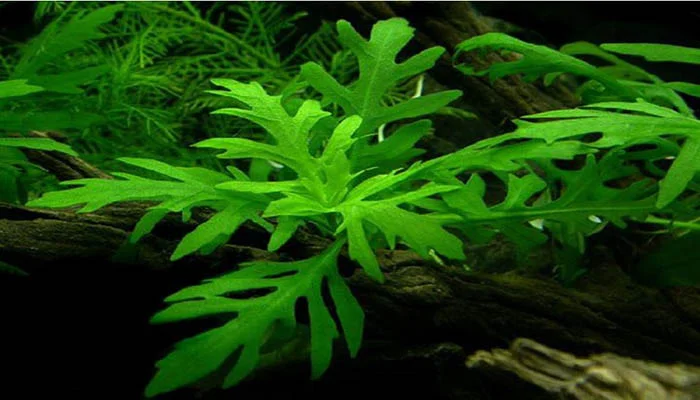
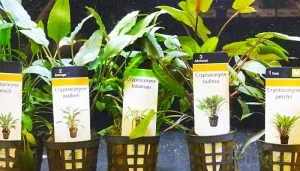
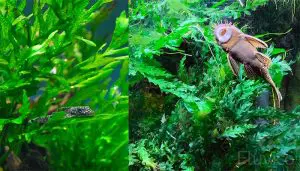
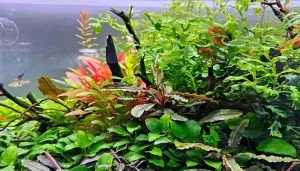
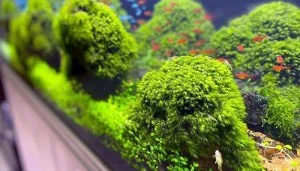
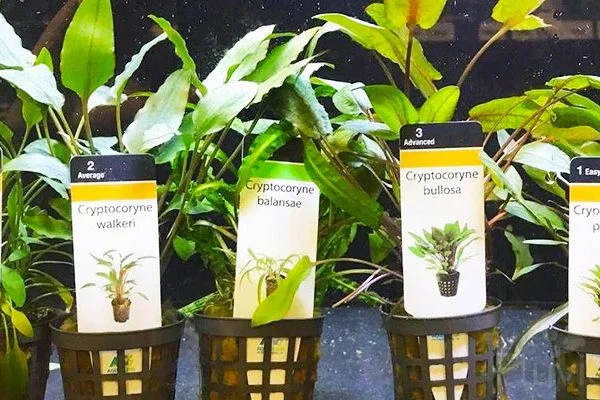
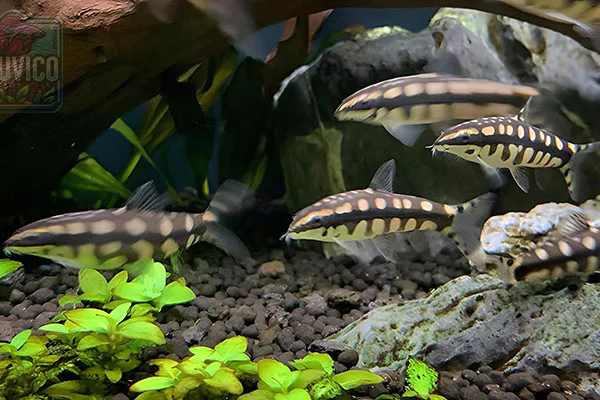

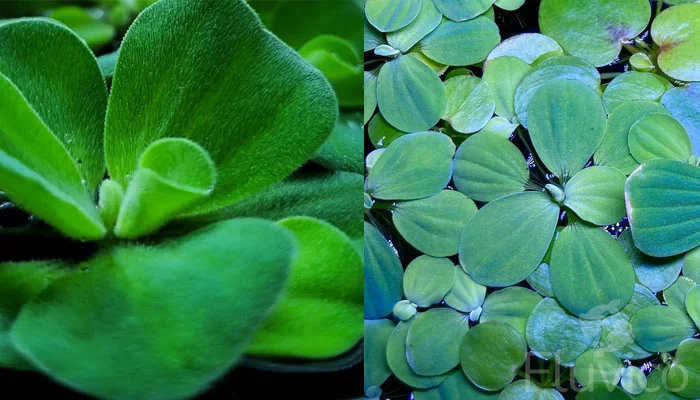
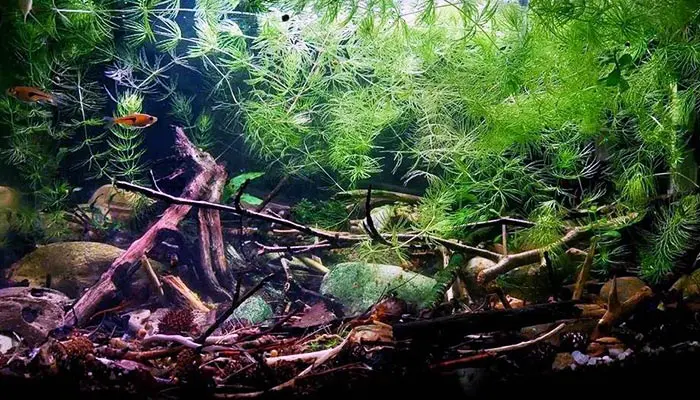
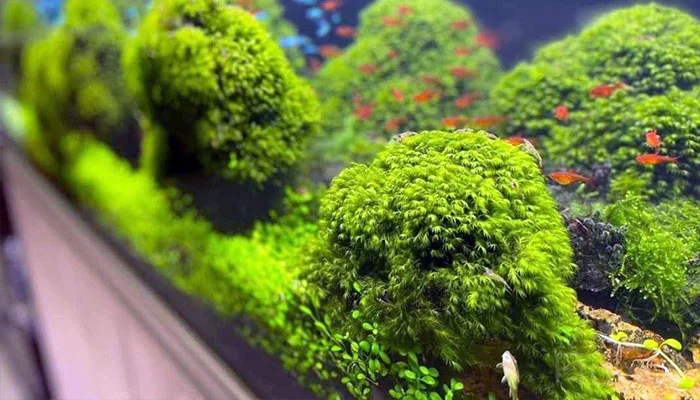
Leave a Comment